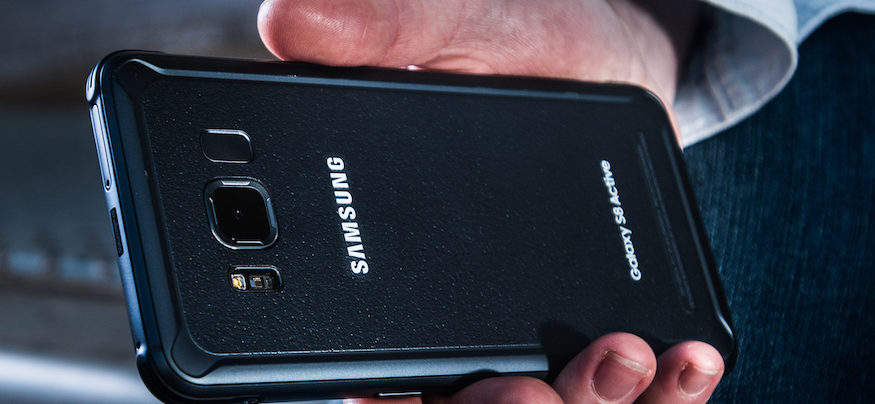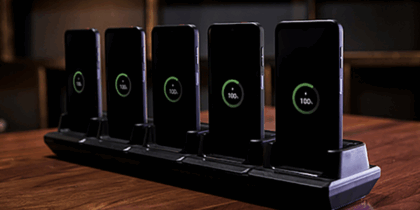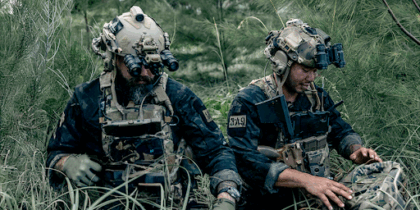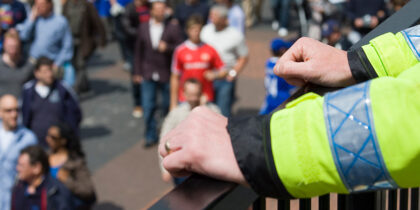In-field identification has always been a challenge for those in law enforcement. In most states, officers are obligated to determine identity with a high degree of certainty before releasing a suspect on a summons or citation.
In situations where there may be sufficient reason to detain and investigate, but not yet probable cause to arrest, properly identifying a person who does not have valid identification in his or her possession can take a great deal of time without certainty of success. Subjects often have to be transported to a police facility, thereby taking an officer out of service for an extended period.
Lengthy detentions can present potential for both complaints and claims of unlawful action on the part of police personnel. Conversely, releasing someone who is contacted because of legitimate police inquiry without fully identifying them might be a missed opportunity to capture a wanted subject or thwart future crime.
Information Upgrade
Fortunately, emerging technology is making clear inroads to address this challenge. In March of 2016, InCadence Strategic Solutions, a company with significant experience in biometrics gained through their work with the Department of Defense, was awarded a contract to provide a mobile biometrics solution to the Federal Bureau of Investigation’s Criminal Justice Information Services Division (CJIS).
InCadence has a product called Ares, which is a micro-kit biometric collection and submission platform that runs on the Android platform and aids in-field identification. Ares is designed to support multiple biometric modalities including fingerprints, faces and irises.
With progress of in-field fingerprint submission, the FBI now has approximately 700 InCadence Ares licenses that allow agents to access multiple fingerprint databases, including those maintained by the Departments of Justice, Homeland Security and Defense. This is a significant accomplishment, as the process is compliant with the FBI Electronic Biometric Transmission Standards and supports both rapid fingerprint identification searches and ten-print rap sheet requests.
Most notable is the fact that these searches are achieved with a device that is easy to hold, and requires no external power source. Usability and compactness make the setup ideal for officers or investigators in the field seeking out a subject’s identity.
Technological Integration and Specifications
Ares operates on an Android platform on a device such as a Samsung Galaxy smartphone or tablet and is paired with small fingerprint scanners manufactured by Integrated Biometrics. The fingerprint scanners, bearing product names like Sherlock, Watson and Five-0 are small enough to be carried in a pocket. The Sherlock and Watson scanners are FBI Appendix FAP 45 certified and support two-finger capture. The Five-0 is FAP 50 certified and capable of supporting full ten-finger enrollment, verification and booking.
The Ultimate Mobile Guide for Law Enforcement
Download this whitepaper for a roadmap on integrating mobile technology into your agency. Download Now
Ares provides a simple, yet instructive user-interface that ensures proper sequencing of fingerprint captures by providing a graphic display and audio confirmation when prints are properly obtained at a verified level of quality. In-field printing can be accomplished in less than 15 seconds and then submitted using cellular data or Wi-Fi. A response is usually provided in under a minute.
The devices are USB powered and use patented light emitting sensors (LES) rather than traditional optical scanners. This approach allows for smaller, more energy-efficient scanners. The Sherlock and Five-0 scanners each draw less than 300mA when operating while the Watson scanner draws less than 250mA. Unlike an optical scanner, LES technology is not affected by direct sunlight when in the field and, because it requires characteristics of a real finger, it cannot be spoofed by a silicone fake — helping address potential security concerns.
Ares is scalable from the smallest to the largest of agencies. Administrators can make the determination as to how many devices should be equipped with the Ares application and the supporting scanner. If a department has an existing mobile program that is CJIS compliant, they can start with one device and add more as needed. Configuration to existing databases and systems is fully customizable according to agency needs. InCadence works with departments to determine the best solution including integration with legacy systems and complying with grant requirements.
Helping Law Enforcement Accuracy
This is truly a gamechanger when it comes to in-field identification using fingerprints. According to InCadence, Ares has already proven itself in the field with dozens of fugitive arrests. Benefits experienced by the FBI have been seen firsthand by local, county and state officers who are part of regional and federal task force organizations. In turn, many non-federal agencies are now soliciting proposals or conducting pilot evaluations.
However, identifying the technological solution is only part of the process as agencies will have to work through the challenges associated with getting approval from their respective state-level Criminal Justice Information Services (CJIS) authorities before they can utilize mobile devices to access most federal databases.
The demand from agencies for effective and timely in-field identification will likely result in expanded use of proven solutions like Ares. Forward-thinking agencies can position themselves for adoption by ensuring their smartphone and tablet devices are Android-based so that USB-powered devices are supported. Agencies should also check that their mobile programs meet CJIS requirements in order to provide full-information access to officers in the field. By examining these considerations, agencies can ensure a smooth technology integration.
Learn more about public safety technology that is improving officer safety and access to information.









